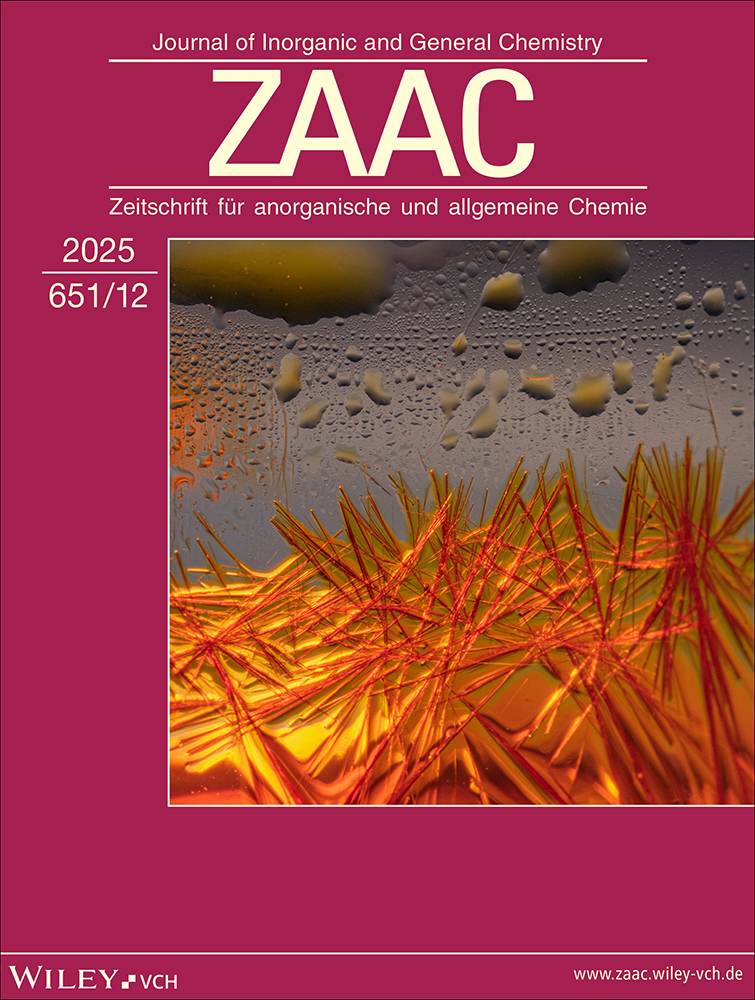Chelatliganden auf Basis peralkylierter Bis- und Tris-Guanidine
Abstract
deDurch Reaktion bi- und trifunktioneller primärer Alkylamine mit dem Chloramidinium-Salz [(Me2N)2C–Cl]Cl lassen sich Amin-Funktionen in basischere Peralkylguanidin-Funktionen überführen. Dieses Synthesekonzept dient zum Aufbau bislang unbekannter peralkylierter Bis- und Tris-Guanidine 1 a sowie 2–4. Der Ligand 1,1,1-Tris[2N-(1,1,3,3-tetramethylguanidino)methyl]ethan (4), reagiert mit ZnCl2 und MnCl2 im Verhältnis 1 : 1 zu Neutralkomplexen 5 und 6, in denen jeweils eine der drei Guanidinfunktionen ungebunden, das Zentralatom folglich tetraedrisch koordiniert vorliegt. Die Kristallstrukturanalysen des Hydrochlorids 1 b, eines TMEDA-analogen Octamethylbisguanidins 1,2-Di[2N-(1,1,3,3-tetramethylguanidino)]ethan (1 a), wie auch die des Zinkkomplexes 5 werden beschrieben.
Abstract
enChelat Ligands Based on Peralkyl Bis- and Tris-Guanidines
By reaction of bi- and trifunctional primary alkyl amines with the chlor amidinium salt [(Me2N)2C–Cl]Cl amine functionalities are transformed into more basic peralkyl guanidine functionalities. This synthetic strategy is used in the synthesis of new peralkyl bis- and tris-guanidines 1 a and 2–4. The ligand 1,1,1-tris[2N-(1,1,3,3-tetramethylguanidino)methyl]ethane (4), reacts with ZnCl2 und MnCl2 to yield neutral 1 : 1 complexes 5 and 6 with one non-coordinating dangling guanidine functionality and a tetrahedrally coordinated metal atom. The crystal structure analysis of the hydrochloride 1 b of octamethyl bis guanidine 1,2di[2N-(1,1,3,3-tetramethylguanidino)]ethane (1 a) as well as the one of the zinc complex 5 are reported.




